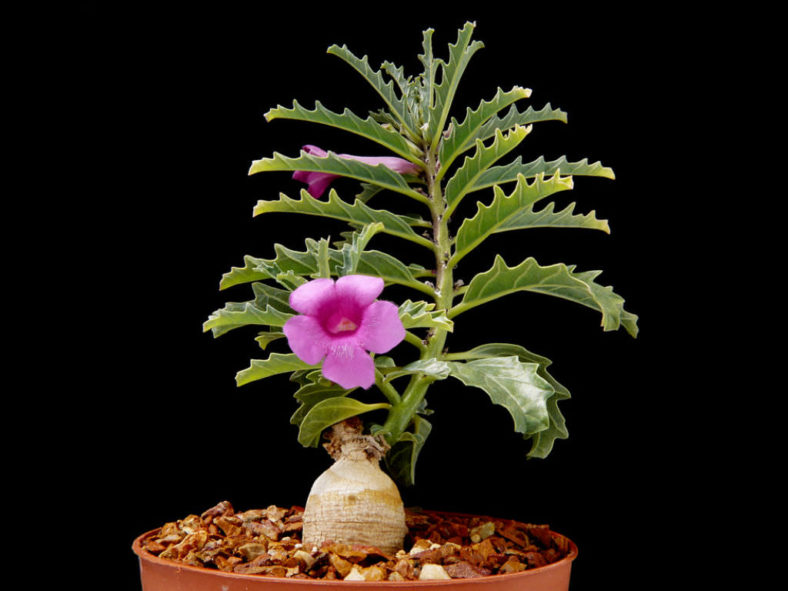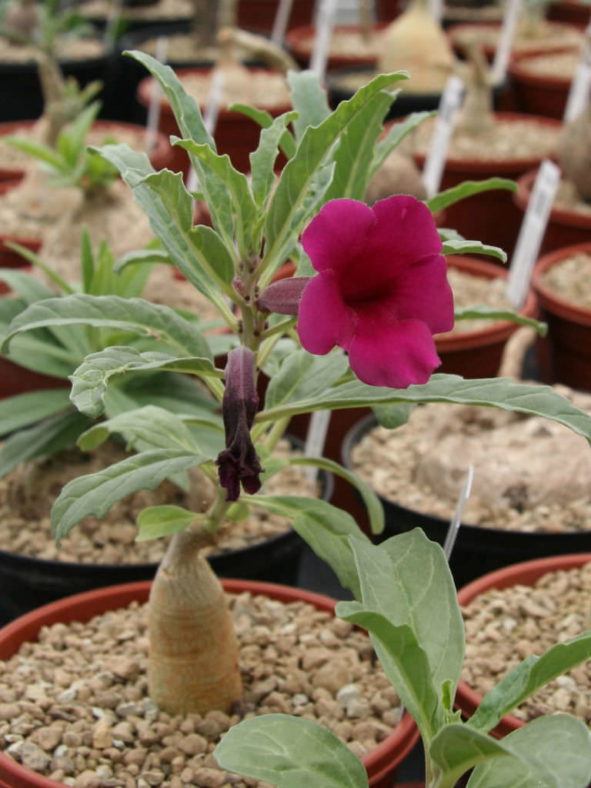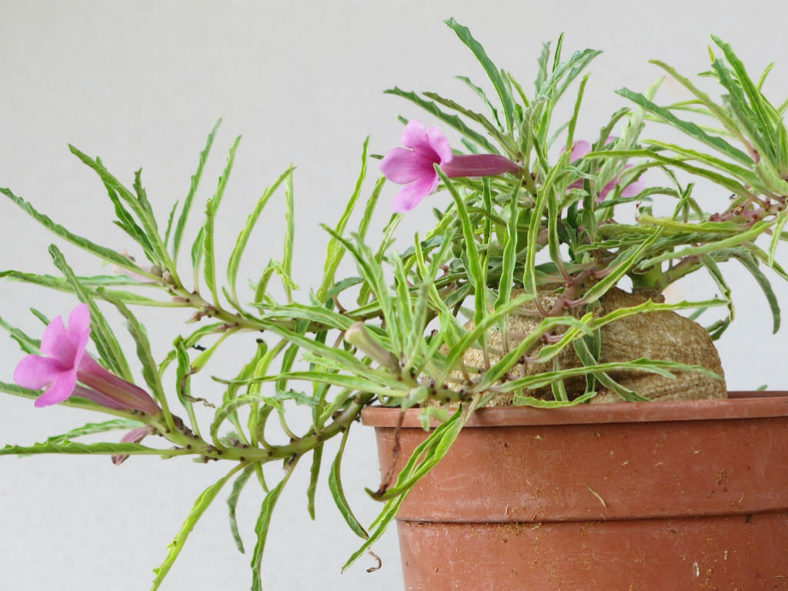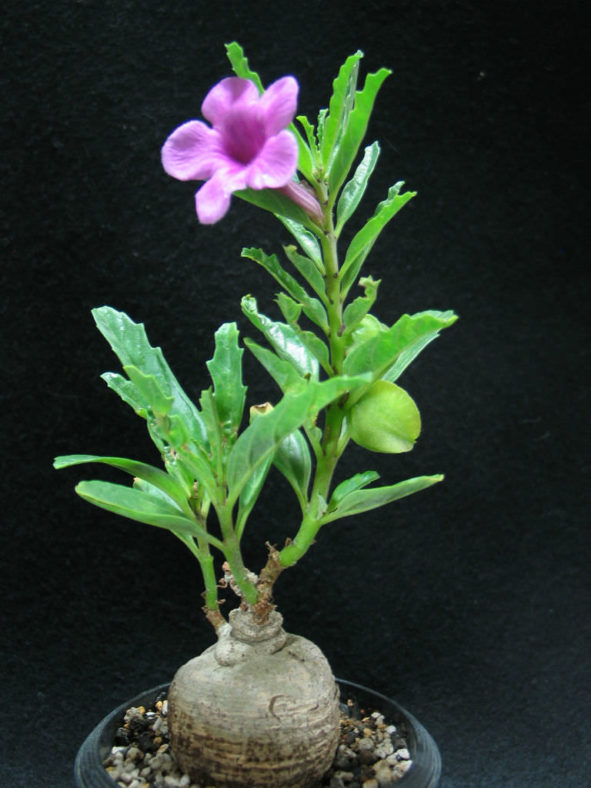Scientific Name
Pterodiscus speciosus Hook.
Synonym(s)
Harpagophyton pinnatifidum
Scientific Classification
Family: Pedaliaceae
Genus: Pterodiscus
Origin
Pterodiscus speciosus is native to South Africa and Botswana. It grows in alluvial soil in grassland.
Description
Pterodiscus speciosus is a perennial plant with a short, woody stem growing from a usually pear-shaped tuber underground in the wild but often raised in cultivation. It can grow up to 8 inches (20 cm) tall. The annual branches generally die in winter when the plant is dormant. They are erect, slender, and arise from the tuber, reaching up to 10 inches (25 cm) in height. The leaves are lance-shaped, usually pinnatilobed, have five pairs of lateral veins, and can measure up to 2.4 inches (6 cm) long and 0.6 inches (1.5 cm) wide.
From spring to fall, Pterodiscus speciosus produces solitary red-purple flowers with darker stripes on the lobes, leading to the dark red throat. Their cylindrical tube can reach up to 2 inches (5 cm) in length and 1.8 inches (4.5 cm) in diameter. The fruits are ovate to rotund, 4-winged, and typically grow up to 1.1 inches (2.2 cm) long and 0.6 inches (1.6 cm) broad.

Hardiness
USDA hardiness zones 10b to 11b: from 35 °F (+1.7 °C) to 50 °F (+10 °C).
How to Grow and Care
Pterodiscus, Sesamothamnus, and Uncarina are all members of the Sesame family. However, despite the relative ease of growing many of them, they are all still relatively uncommon succulents.
One reason that Uncarinas are not common in cultivation is that the seed does not germinate easily. Propagation by cuttings is not a substitute because they do not root easily either. In short, Uncarina is a difficult plant to propagate.
But once you have managed to get one, it is relatively easy to grow. It needs plenty of warmth and plenty of water in the growing season, but keep it dry in the winter. They can grow up to 13 feet (4 m) in the wild but do not expect that in your greenhouse or window sill.
Uncarinas are tender and cannot endure temperatures below 35 ° F (2 °C). If grown outdoors, they will probably grow back from roots if frozen. They are pretty heat-tolerant. Uncarinas need rich, very well-drained potting soil. Use diluted fertilizer on young plants to speed up growth. This plant blooms easily and is a striking vision when covered with flowers. The seed capsules feature small hooked harpoons.
See more at How to Grow and Care for Uncarina.
Links
- Back to genus Pterodiscus
- Succupedia: Browse succulents by Scientific Name, Common Name, Genus, Family, USDA Hardiness Zone, Origin, or cacti by Genus
Photo Gallery
Click on a photo to see a larger version.


